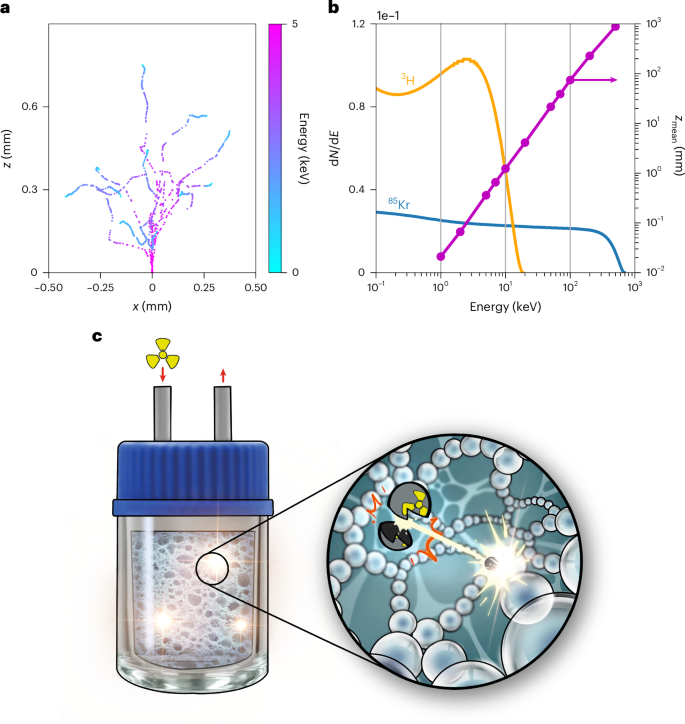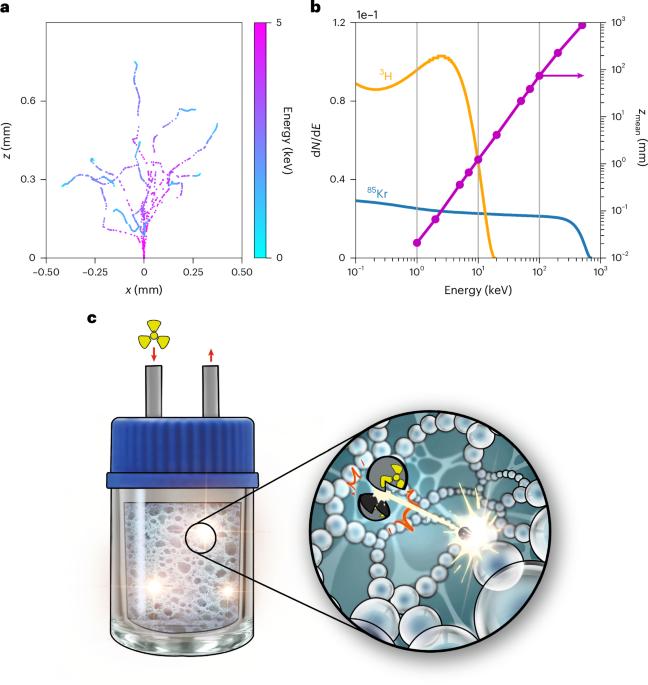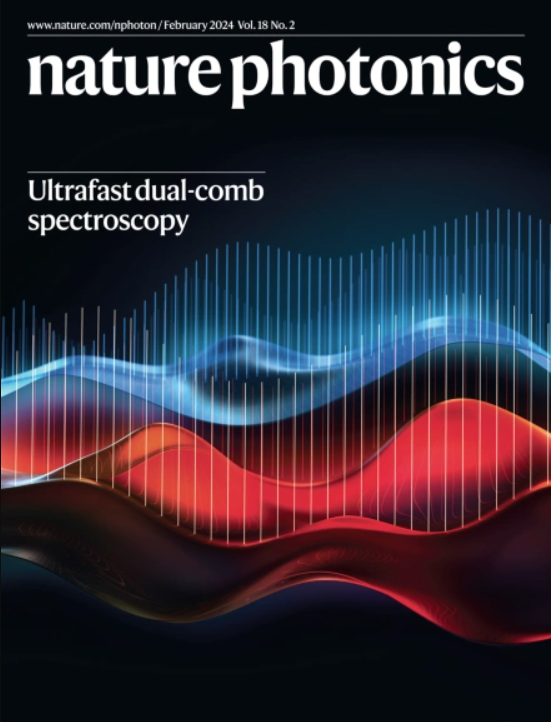Real-time detection and discrimination of radioactive gas mixtures using nanoporous inorganic scintillators
IF 32.9
1区 物理与天体物理
Q1 OPTICS
引用次数: 0
Abstract
The nuclear industry’s expansion to encompass carbon-free electricity generation from small modular reactors and nuclear fuel reprocessing necessitates enhanced detection and monitoring of pure beta-emitting radioactive elements such as 3H and 85Kr; this endeavour is crucial for nuclear safety authorities tasked with environmental monitoring. However, the short range of electrons emitted by these gases makes detection challenging. Current methods, such as ionization chambers and liquid scintillation, do not offer at the same time good sensitivity, real-time analysis and ease of implementation. We demonstrate an approach using a gas–solid mixture to overcome these limitations. We synthetized a transparent and scintillating nanoporous material, an aerogel of Y3Al5O12:Ce4+, and achieved real-time detection with an efficiency of 96% for 85Kr and 18% for 3H. The method reaches a sensitivity below 100 mBq per cm3 over 100 s measurement time. We are able to measure simultaneously as mixtures containing both 3H and 85Kr a capability not possible previously. Our results demonstrate a compact and robust detection system for inline measurement of strategic radioactive gases. This combination of concept and method enhances nuclear power plant management and contributes to environmental safeguarding. Beyond the detection issues, this concept opens a wide field of new methods for radionuclide metrology. Using a gas–solid mixture approach, researchers used a transparent, scintillating nanoporous material for real-time detection of 85Kr and 3H, two pure beta emitters. They also simultaneously measure a mixture of them. The broadly applicable approach may be useful for nuclear industry and environmental safeguarding.


使用纳米多孔无机闪烁体对放射性气体混合物进行实时检测和鉴别
随着核工业向小型模块化反应堆无碳发电和核燃料后处理领域的扩展,有必要加强对 3H 和 85Kr 等纯β放射性元素的检测和监测;这项工作对于负责环境监测的核安全机构来说至关重要。然而,由于这些气体发射的电子距离较短,因此检测工作具有挑战性。目前的方法,如电离室和液体闪烁,无法同时提供良好的灵敏度、实时分析和易于实施。我们展示了一种利用气固混合物来克服这些限制的方法。我们合成了一种透明闪烁的纳米多孔材料--Y3Al5O12:Ce4+气凝胶,并实现了实时检测,85Kr和3H的检测效率分别为96%和18%。在 100 秒的测量时间内,该方法的灵敏度低于每立方厘米 100 mBq。我们能够同时测量含有 3H 和 85Kr 的混合物,这在以前是不可能实现的。我们的研究结果表明,这是一种用于在线测量战略放射性气体的结构紧凑、功能强大的检测系统。这一概念与方法的结合加强了核电厂的管理,并有助于保护环境。除了检测问题之外,这一概念还为放射性核素计量新方法开辟了广阔的领域。
本文章由计算机程序翻译,如有差异,请以英文原文为准。
求助全文
约1分钟内获得全文
求助全文
来源期刊

Nature Photonics
物理-光学
CiteScore
54.20
自引率
1.70%
发文量
158
审稿时长
12 months
期刊介绍:
Nature Photonics is a monthly journal dedicated to the scientific study and application of light, known as Photonics. It publishes top-quality, peer-reviewed research across all areas of light generation, manipulation, and detection.
The journal encompasses research into the fundamental properties of light and its interactions with matter, as well as the latest developments in optoelectronic devices and emerging photonics applications. Topics covered include lasers, LEDs, imaging, detectors, optoelectronic devices, quantum optics, biophotonics, optical data storage, spectroscopy, fiber optics, solar energy, displays, terahertz technology, nonlinear optics, plasmonics, nanophotonics, and X-rays.
In addition to research papers and review articles summarizing scientific findings in optoelectronics, Nature Photonics also features News and Views pieces and research highlights. It uniquely includes articles on the business aspects of the industry, such as technology commercialization and market analysis, offering a comprehensive perspective on the field.
 求助内容:
求助内容: 应助结果提醒方式:
应助结果提醒方式:


